Spotlight on a YouthADAPT Winner: How a Waste Management Company in Cameroon Uses Drones to Reduce Flood Risk
In an interview with GCA, Bleaglee Waste Management’s Juveline Ngum Ngwa explains how winning the YouthADAPT Challenge helped her overcome obstacles, gain confidence and expand her company, which builds software for drones to detect waste in waterways and drainage channels that are later collected.
D
ue to climate change, Cameroon is at increasing risk of life-threatening river floods. Poor waste disposal can exacerbate these disasters by clogging drains. It can also lead to other serious issues such as respiratory diseases when waste is burned and the contamination of water when waste is dumped into canals, oceans and wetlands.
Bleaglee Waste Management helps communities mitigate the risk of floods by first using drones to identify waste in waterways and drainage channels. Youth environmental groups and informal waste collectors work with Bleaglee to pick up and collect waste, which is then sorted and recycled. Plastic waste is turned into fuel and sold. The company works with vulnerable communities, businesses, government and non-governmental organizations.
Bleaglee is one of 15 winning enterprises of the 2021 African Youth Adaptation (YouthADAPT) Solutions Challenge, an annual competition organized jointly by the Global Center on Adaptation (GCA), the African Development Bank (AfDB), and the Climate Investment Funds (CIF) as part of the Africa Adaptation Acceleration Program (AAAP).
One area of focus of the AAAP is building the enabling environment to scale up support for adaptation solutions and grow the ecosystem of investors and innovators to create jobs and livelihoods in adaptation. The YouthADAPT Challenge provides seed funding of up to US$100,000 for enterprises managed by youth under the age of 35, leading them through a 12-month accelerator program to help them grow their businesses, deepen their impact, and scale up adaptation jobs.
In 2021, GCA received more than 2,000 applications from 45 African countries. Fifteen winners, including Juveline Ngum Ngwa, CEO and Co-founder of Bleaglee, were announced during an official awards ceremony at COP26 in Glasgow.
The AAAP was launched by GCA and the AfDB to mobilize US$25 billion by 2025 for climate adaptation investments in Africa for a faster and stronger post-COVID-19 economic recovery based on climate-resilient development pathways. In its first 18 months of operations, the AAAP’s Upstream Financing Facility has influenced more than US$3.5 billion in upstream investments with Multilateral Development Banks in 19 countries in Africa.
In the following interview, Ms. Ngwa shares how the YouthADAPT Challenge helped her and her enterprise grow and overcome a series of obstacles.
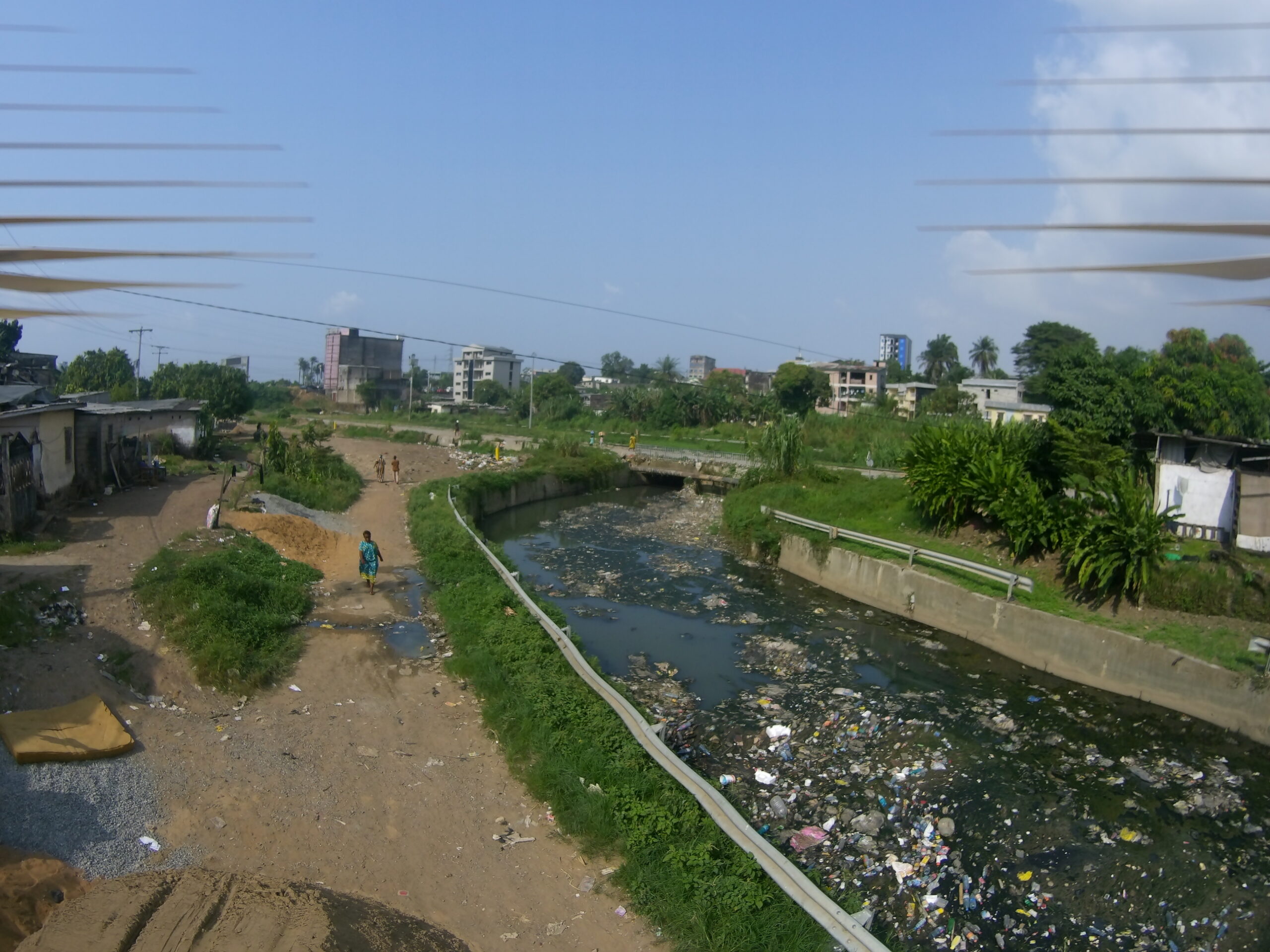
What climate-related challenges do you and your community, particularly youth, face in your daily lives?
Poor disposal of waste in drainage channels is the major cause of flooding in Douala and most western parts of Cameroon. The underlying factors are the lack of adequate waste management and recycling facilities, the limited drainage systems, and the need for better community awareness and education. The impact of poor solid waste management is experienced very strongly by residents of informal settlements that are often outside the control of municipal authorities. As climate change intensifies, these residents are also more vulnerable to the impacts of flooding and less able to cope with it. People impacted by flooding lose livelihoods and belongings as well as time spent drying out their flooded houses, which also exposes them to further health hazards. Flooding affects all residents in these areas, but young and older women are especially vulnerable due to their low socioeconomic status, fewer opportunities, and responsibilities that confine them at home.
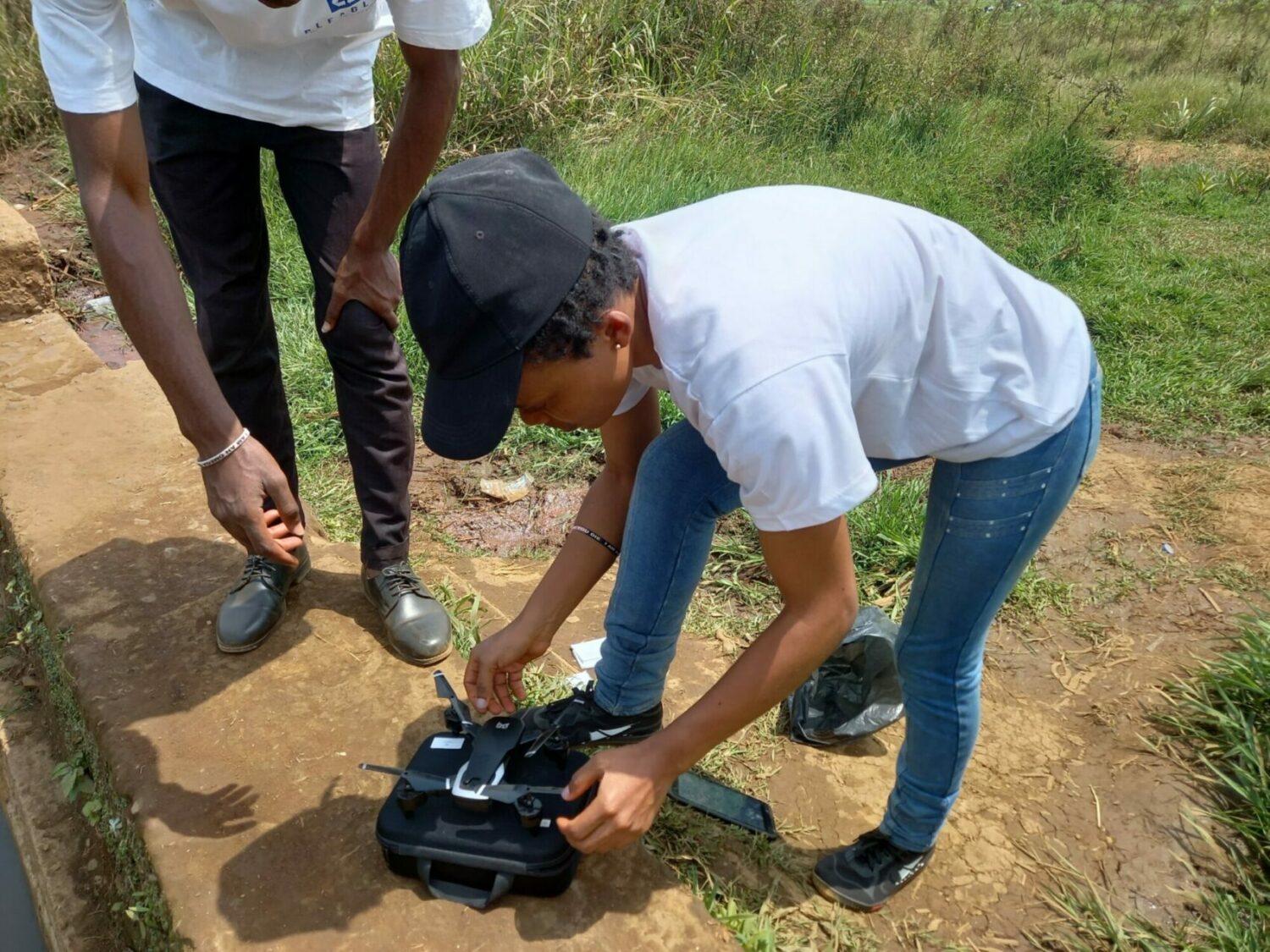
What solutions do you provide for these challenges, and how does Bleaglee use drones to find waste?
Our solution is based on using technology to provide sound management of waste, early warnings, and disaster risk reduction, with informal waste collectors and youth eco-groups as our service delivery channels.
First, we provide early warnings for multi-hazards such as flooding, respiratory issues and water contamination by building software for drones to inspect poorly disposed waste on drainage channels and waterways. Our software guides drones along trajectories that find waste from the collected images, and outputs reports.
Our digital platform provides on-demand waste recycling and disposal services to individuals and businesses and pays them via mobile money and e-wallet. After collecting waste on drainage channels and waterways, we proceed to collect from nearby individual owners of waste who have booked a pickup request via our digital platform, Bleaglee Testfy.
The waste is then properly disposed or sold to recycling corporates in national and international markets, and the waste collectors and individual owners of waste receive a portion of the recycling revenue via mobile money or e-wallet on the same day. By having many collectors in our coverage region, we optimize pickup routes using GPS technology to minimize the amount of fuel consumed for each waste pickup.
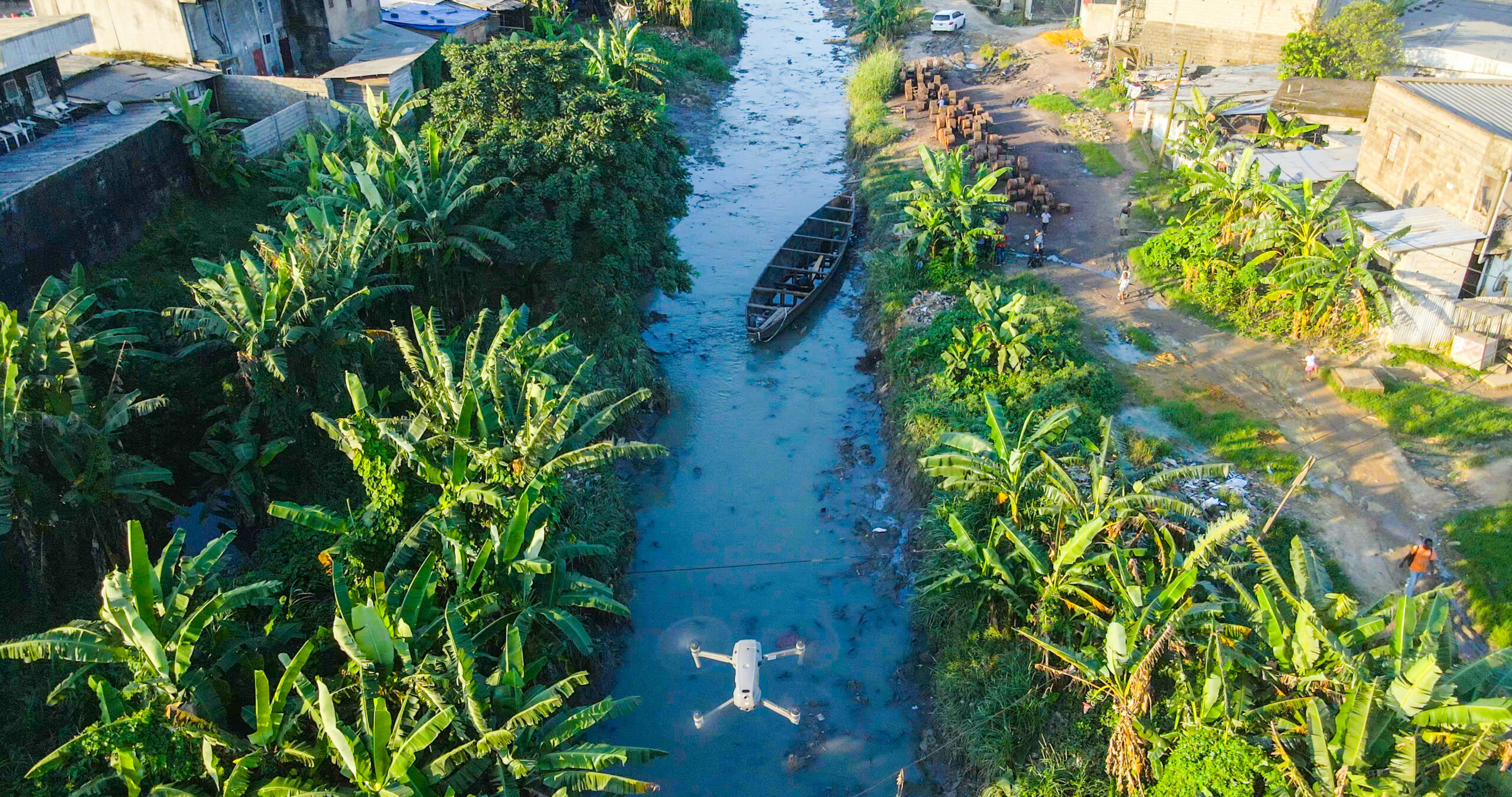
How does Bleaglee contribute to the community and climate adaptation?
The Bleaglee platform uses a combination of complex 3D flight planning software and artificial intelligence algorithms. Artificial intelligence is harnessed for data analysis and modeling to develop a new system to monitor and project waste that can lead to the blockage of drainage channels, increasing the accuracy and accessibility of risk data, as well as early warning times in the event of emergencies, contributing to climate adaptation. Our team leverages innovation through drones while engaging with vulnerable communities and youth eco-groups for data collection.
Our socio-economic empowerment programs are helping vulnerable communities in behavioral shifts such as recycling and properly disposing of their waste. The engagement of vulnerable communities and youth eco-groups in the process of proper waste disposal is a highly effective mechanism to control waste. The scheme is also creating local employment for young refuse collectors, and locals are trained to collect and gain revenue from recycled waste.
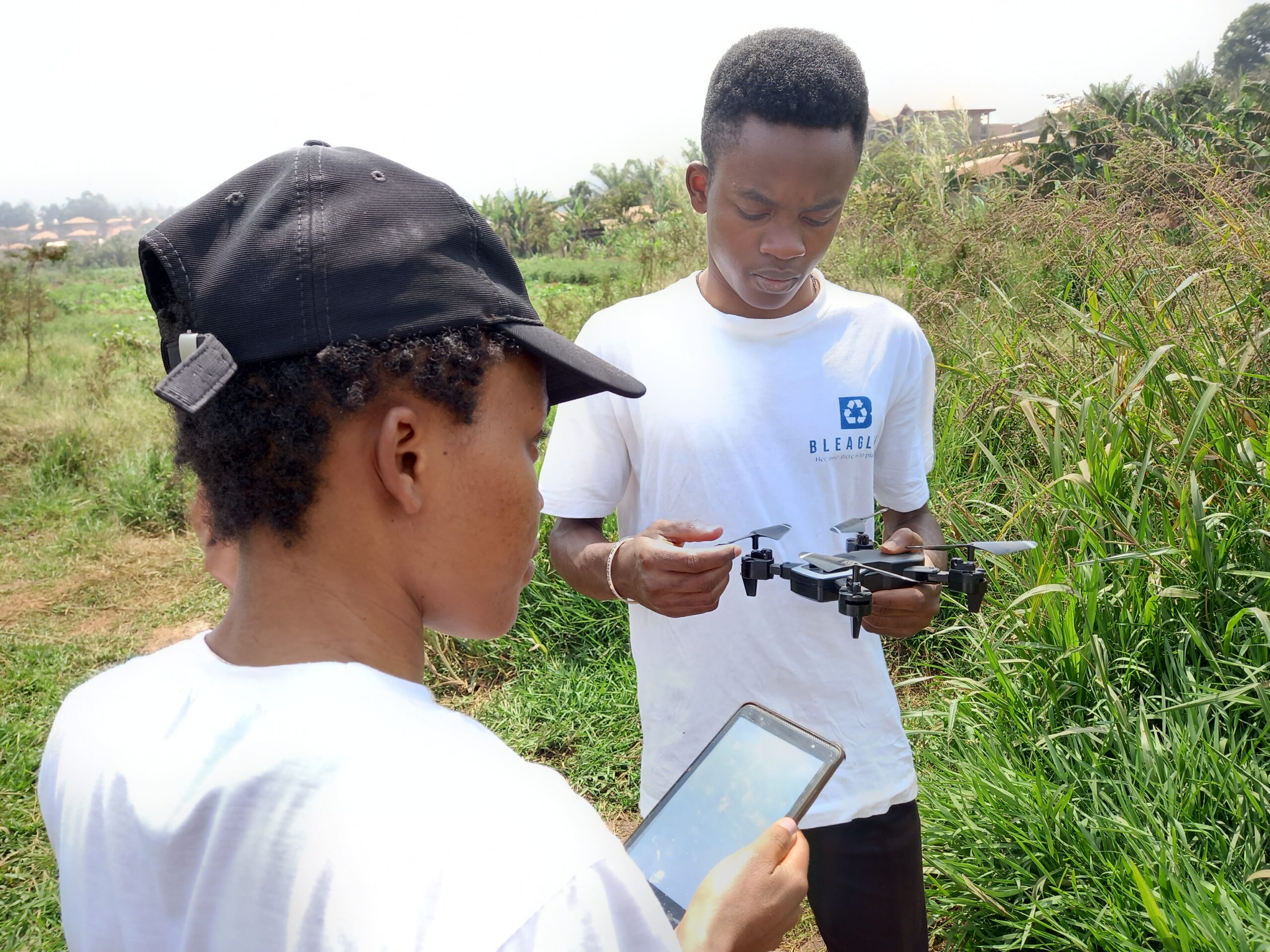
What challenges have you faced in trying to implement these solutions? How has the YouthADAPT program helped?
A major challenge we are facing is an operational–supply chain challenge. This challenge comes about as a result of heavy rainfalls that greatly disturb the transportation of our waste trucks through the supply chain. During the rainy season, when we plan to transport waste materials, the rains make transportation difficult.
With the support of YouthADAPT, we have been able to expand out of our current geography and we are purchasing a new waste truck for alternative transportation.
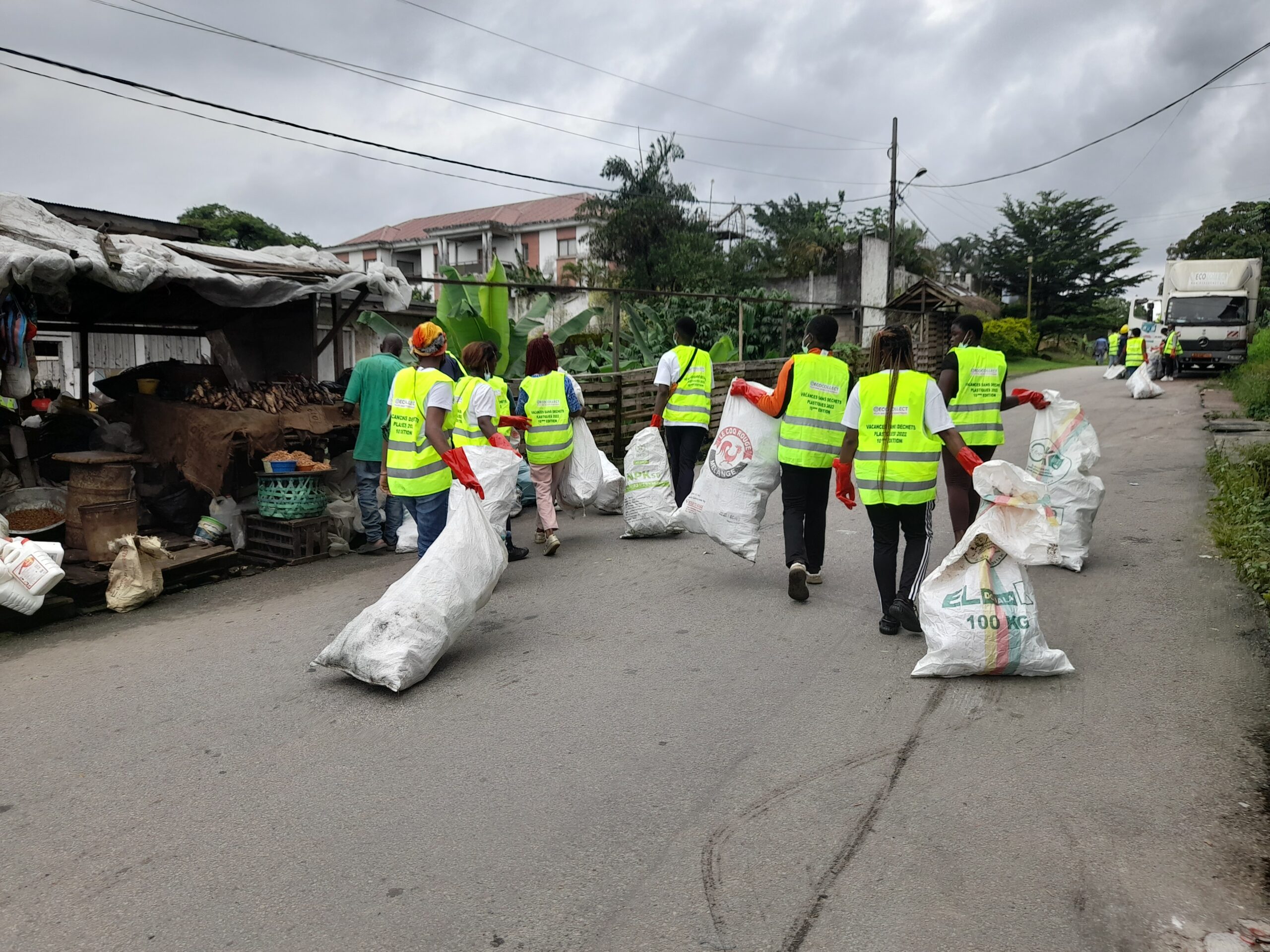
What benefits did you personally derive from the YouthADAPT mentoring program and what are the next steps for you?
The mentoring program exposed me to new ideas and ways of thinking, as well as built my confidence and improved my problem-solving abilities. The advice, guidance and personalized support from my mentor helped me develop leadership strengths and overcome weaknesses. It was a great platform to support my professional development.
Our hopes are to create collaborations with city authorities and other stakeholders, and to advocate for better drainage systems and engineering designs in Douala and Yaoundé. We want to engage all key stakeholders in the planning and formulation of processes to reduce flooding due to garbage blocking inadequate facilities, such as narrow drainage channels.